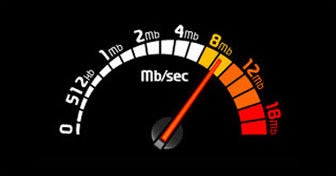On May 13, South Korea Based Mobile device manufacturing company Samsung Electronics announced in their website that they have already discovered the 5G mobile technology for first time. They have also announced that they are using world’s first adaptive array trans-receiver technology operating in the millimeter wave Ka band. They have also mentioned that their technology provides faster data rate which is almost hundred times faster than the current 4G technology.
You will be able to see the whole story if you check the “Samsung Tomorrow” page. But in my techie mind some question arose and i am looking for the answers for those questions. As a student of telecommunication engineering i know a little bit about the telecommunication technology and from that knowledge i have some question in my mind.
The Questions that I have About Samsung 5G Mobile Technology:
I think some factors are very important but those are not mentioned in Samsung article.
1. How Big is The Receiver Device?
Samsung is telling in their article that they are using 64 antenna arrays, then they must need a very big device to implement those antennas. In the current LTE (Long Term Evolution) technology the 3GPP team is challenging to implement only 8 antennas keeping in mind the receiver cost and the battery charge level which is required for the device. But Samsung is telling about 64 antenna arrays, which is theoretically possible but considering the commercialization of the device it is bit impractical.
2. The Battery will Consume How Much Charge?
To operate all the 64 antenna arrays the device must need to supply a good amount of power and which will be supplied from the battery or batteries. But there is not point which is mentioned about the batteries.
3. Is There Only One Base Station or Any Relay Is Used Within the Area of 2 Km?
4. Which Fading Channel is Used For the Experiment?
There is no specification about the environment or the channel. It is not specified about which fading channel is used to do this experiment. If the environment is clear then this is not possible in crowded cities where there are lot of buildings. There must have some fading channel like Nakagami-m or Rayleigh Fading Channel or Ricean Fading Channel which is used in between the receiver and transmitter. Otherwise the experimental data is not realistic.
The above questions are very important for me and i think will arise in anyone’s mind who is having some telecommunication related knowledge. If someone is having any answer of these questions then he or she can give me the answers through comments. Your comment is most welcome.



